Natural dyes are something I came across on Pinterest but I put the idea of the back of my mind until I could think of a proper project. Recently I read a natural dye post on the Modern Botanics blog (beautiful, do have a look) about natural dyes and it sparked my curiosity again; I decided my project could be a colour study for my illustrations rather than a finished object.

Being a natural dye noob, I was expecting to end up with a pile of sludgy brown rags. But to my surprise the results were actually really good. Drum roll please!
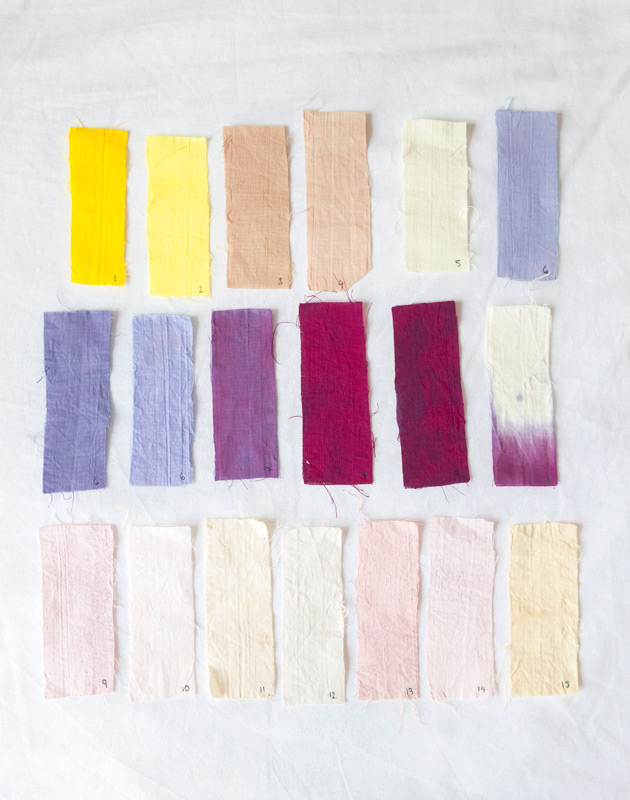
A nice range of colours don’t you think? The only colour I struggled to make was green. Plenty of pink and although I’m not a fan of pink I like these muted shades.
Top row from left to right: turmeric (yellow), red onion skins (brown), rosemary (green), blackcurrants (blue/purple).
Middle row: blackcurrants (blue/purple and plum). The swatch on the end was dip dyed.
Bottom row from left to right: orange nasturtium flowers, candy stripe beetroot, chard leaves (beige), lavender (last four).
Favourite shades

Homegrown candy stripe beetroot! The flesh is only fifty percent pink so I think the dye would have been stronger if I’d used traditional hot pink beetroot.

Blackcurrants made a very rich plum coloured dye. For the bluer shades, I diluted the dye by adding more water. It was a bit of a happy accident and there are probably more scientific ways of achieving this colour.
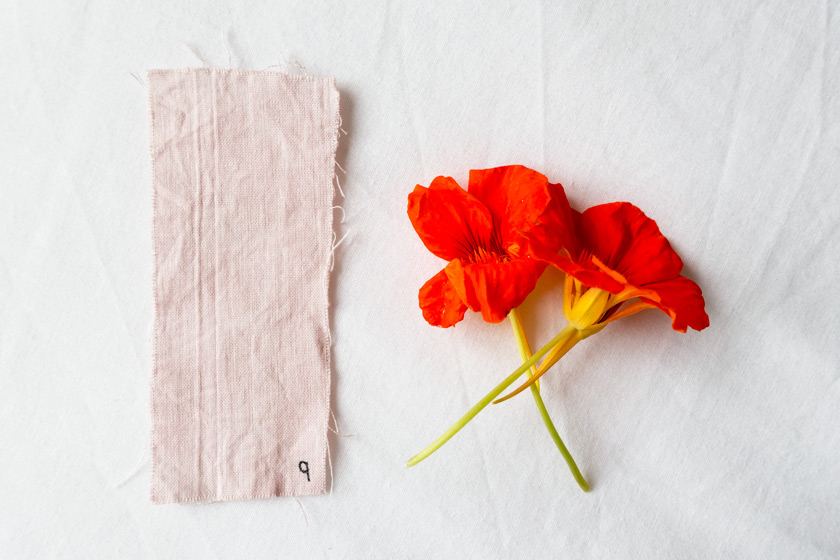
Nasturtium flowers simmered down to a luminous red dye which made salmon coloured fabric.
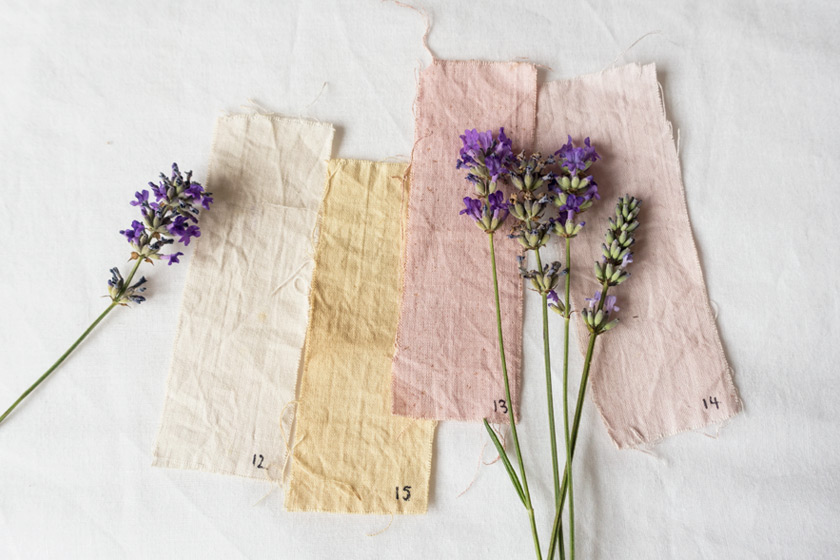
Lavender was a bit of a disappointment because I was expecting purple dye. Instead it was brown (fabrics 12 and 15). Purple disappointment aside, the dyes created dreamy colours. Adding mint leaves and lemon juice turned the lavender dye bright pink (fabrics 13 and 14) — it also smelt really good cooking on the hob.
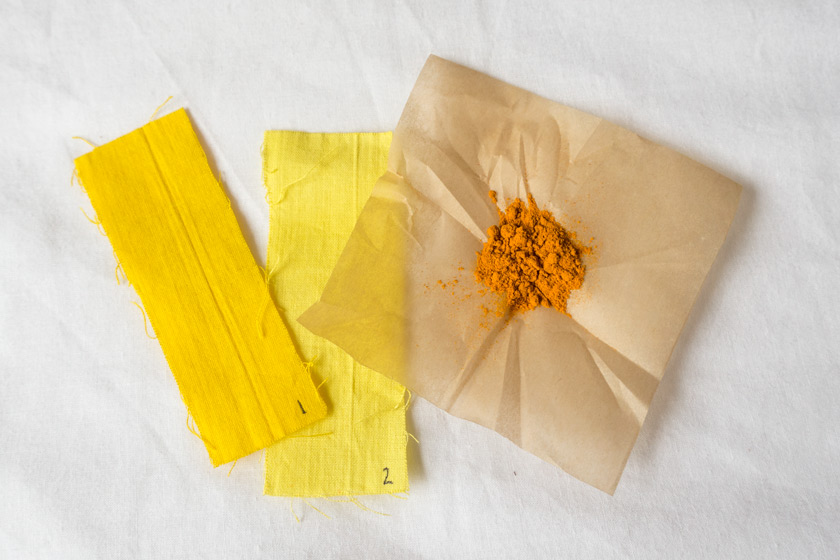
Turmeric. Wow! What a punch in the eye after all those neutrals! This dye was made with powdered turmeric. Number 1 is darker because it sat in the dye bath for twice as long as number 2.
Favourite colour combinations
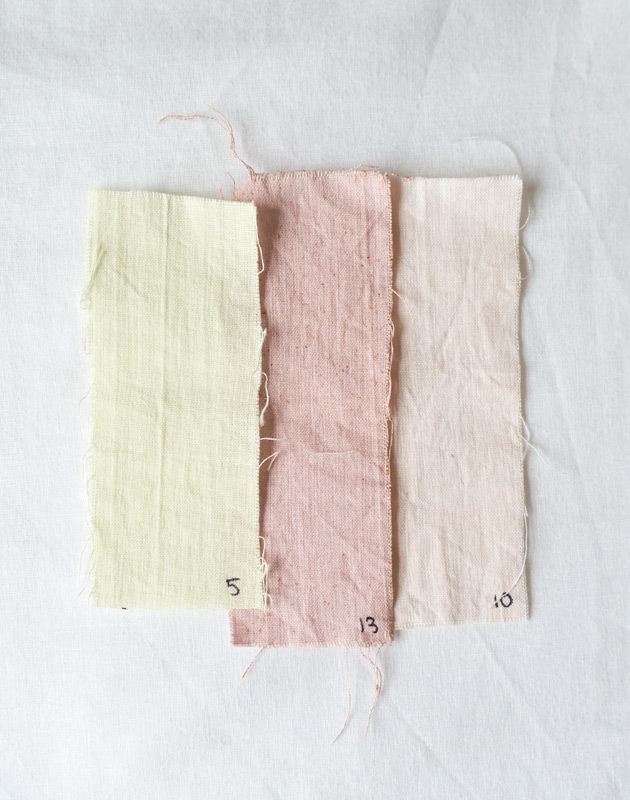

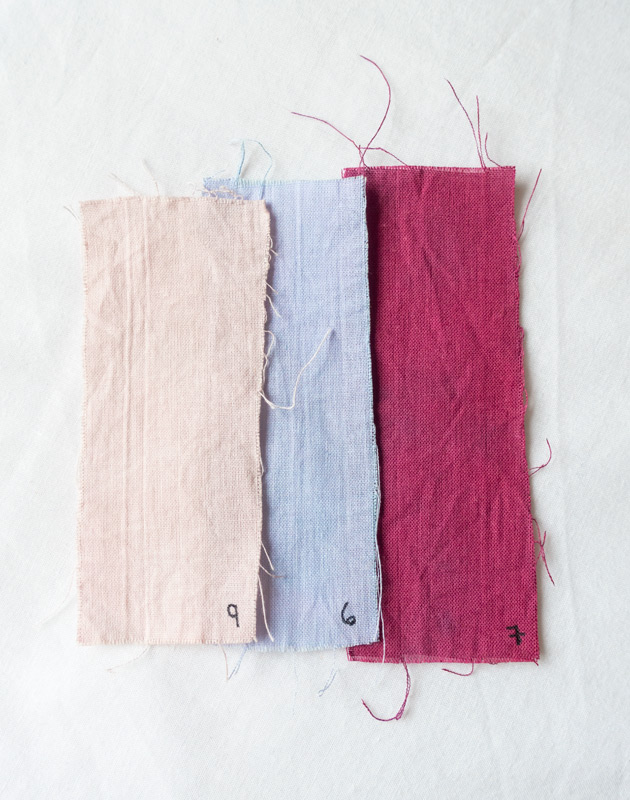
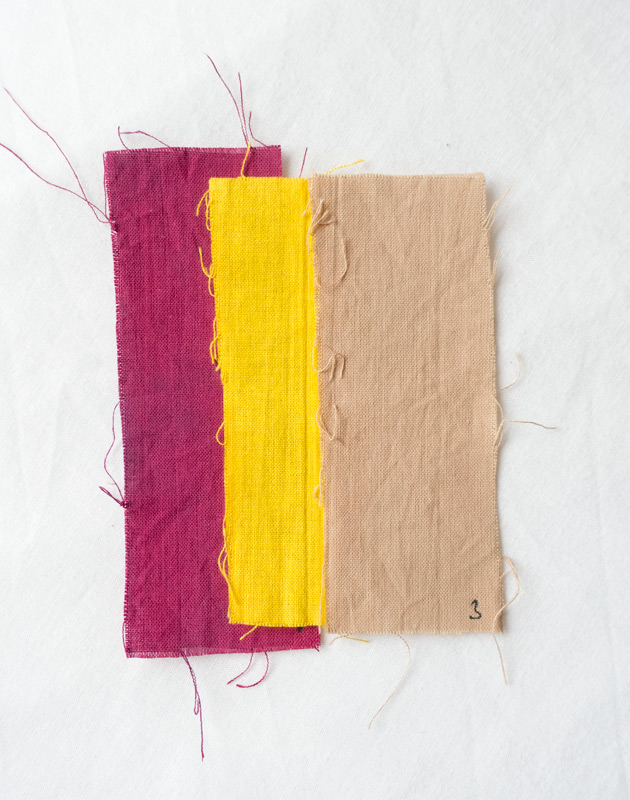
Method
Material: 100% cotton, linen or silk. Mine was cotton but I’d like to use linen or silk next time.
I used this method by Etsy (video tutorial). Most of my fabric soaked in the dye bath for 30 minutes, however the blackcurrant and turmeric dyes were so rich they didn’t need to sit in the dye for that long. Something to bear in mind is that the fabric colour will dry a little lighter so aim for a slightly darker colour when dyeing.
* If you want to make colourfast fabric you will need to use a mordant (colour fixing ingredient) like alum. Salt is to help the dye stick to the fabric in the Etsy video above but it won’t make it colourfast.
It’s pretty cool you can use berries and onion skins to dye fabric. Cotton was the only item I bought for this project. We already had everything else in the kitchen, making this a cheap and natural way to work.
If you try making your own dyes, drop me a comment below or @ me on instagram (@stayandroam). I’d love to see which plant materials you choose and the colours they produce.

These are all beautiful colours absolutely gorgeous x
Thanks! I wish I’d dyed more of each colour now so I could make something 🙂
Wow! I’m amazed at how vibrant some of these are, especially the turmeric. I love the lavender ones, it’s strange how adding in the lemon and mint made it turn out more pink than beige. It’s a shame you couldn’t create a green one.
xo April | April Everyday
I like the lavender too 🙂 Many of the pastel shades come alive when you place them next to a vibrant colour — and you start to see how different shades that look the same are. I am determined to make green!
How about spinach or green tea for the green? Macha might be better but more expensive
Can you combine the turmeric and blue of the blackcurrants?
Good thinking with the Macha, it’s very green! I will try spinach too. Thanks for the ideas Sammi!
Oh I love this Gemma! And funnily enough it’s been something I’ve wanted to do for a while now (also a fan of Modern Botanics!) x
Thanks Annie! Be warned, it’s addictive. I’ve been squirrelling away all sorts of things in bowls around the kitchen.
Oh this is fabulous! I now really want to do this myself.
Once you start it’s addictive 🙂
I keep meaning to try some dying and these colours you have achieved are a fabulous inspiration. Love the currant purple th ebest I think … or maybe the turmeric yellow.
Ah thank you Rosie. To be honest, I was surprised by the variety of colour I achieved. Avocado is top of my list for the next batch; from looking around it seems you can create some beautiful shades of pink.
To get the most beautiful range of greens use sand cherry shrub purple leaves. When the fabrics are removed from the dye pot and allowed to dry, they will be beautiful grays. When you rinse the fabrics they turn every shade of nature’s greens. Dependent on the fiber content.
I am currently dyeing fabric with flowers. I have used red geraniums and the leaves, I especially like the colors released from marigolds. I have used seeded eucalyptus and regular eucalyptus leaves. I will experiment with mint and lupine as well. Happy days!
Avocado peels and pits make a beautiful peach color.
Spirulina makes blue 🙂
How did you make the really lovely pink / purples in the middle row? Is the entire middle row blackcurrants and was there some deviation / did you change the length of time etc?
Danielle
I’ve been playing around with plant based dyes this week, I’m totally new to it. I produced some very lovely yellows, using alum as a mordant, with Budliea, Goldenrod and Yarrow. I’ve got a jar of iron water marinating to use as a fixative and an after dye and am very curious as to the results.
Currently I’m soaking the heads of Spanish Lavender and plan to use your tip of mint and lemon, thank you for that.
I’ve also harvested about a pound of rose hips to use as dye, fingers crossed.
All of my eyes have been made from materials I’ve harvested myself from around town.
Sounds like some interesting experiments Sam, and it’s nice to hear how much you’ve found locally 🙂
Coreopsis makes a lovely yellow too. It’s not as bold as turmeric, but it’s more bright than anything else from my garden..